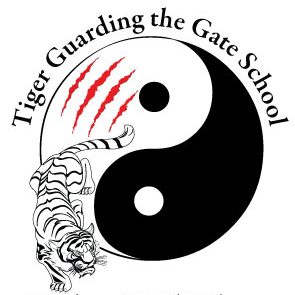 Yielding against great force
Yielding against great force  is not always possible as it requires a great deal of skill or acting ” in the moment ” to turn impending defeat into an attack. It is clear that if you allow your opponent to throw all he has into an attack, there will be a point where he has no more left to give and will decide to retreat in order to attack again. in that moment your victory will be swift .
is not always possible as it requires a great deal of skill or acting ” in the moment ” to turn impending defeat into an attack. It is clear that if you allow your opponent to throw all he has into an attack, there will be a point where he has no more left to give and will decide to retreat in order to attack again. in that moment your victory will be swift .
Entice them forward Why would someone throw all they have into an attack? Well in some ways perhaps it is a magic trick. If you opponent attacks with out thought and all at once, we should be able to divert the attack with ease. In my experience opponents are more cunning… and know that an all out attack will result in defeat they will require a bait. Sometimes the bait is small , not much encouragement is needed for it to be taken.
Perhaps you will give the illusion that you are bringing all you have into an attack the opponent sensing this throws all he has back at you and “in the moment” defeat is swift the illusion unveiled. But this is sometimes not enough the bait not big enough, the possibility of your demise not strong enough (well remember after all it is just an illusion). Entice them forward by giving your opponent what he desires most , your destruction. When victory is eminent when the result is so absolute in their mind, in that “moment” they will give it their all. Only when they have sensed that your demise is but a breath away it ‘s this “moment” you will unveil what you have left they are exposed and defeat is swift.

What strategy do you use to get someone off balance?
Hi Emma thanks you for your question, one of Pushing hands main aims is to destroy the opponents balance to gain and take advantage there are many ways to do this.
My preferred concept is to use the persons energy to help me. by creating a small disruption in their balance, you can gauge their reaction and capitalise on their momentum. By understanding their direction of movement, you can apply targeted techniques to further disrupt their balance and control the interaction.
From Albert
There is no simple answer to this.
The strategy used at the time depends on the circumstance, rules and opponent. Fixed/moving step pushing hands, san shou, or a street fight, again, changes the dynamic. So it needs to be adapted in the moment and from moment to moment.
Rather than looking for a quick solution to “this is how to get someone off balance”, it’s more important to stick to principles, tools and ideas that you are harnessing through the practice of tai chi chuan.
I don’t intend to rewrite the classics, as a lot of it is already there in the classics.
Some thoughts I hold on to during pushing hands/combat which you may call my “Strategy” in my own words are;
LOSE EAGERNESS: Do not be too keen and eager to go chasing for the point, or knockout, whatever it may be. Let your opponent make the mistake, tease them, entice them… as long as you are not losing, what’s the problem?
HAVE A SET OF SHARP TOOLS: Have a few sharpened tools under your belt, but do not expect to use any if the opportunity is not presented to you.
ADAPT: Even though you may have certain tools, they can and should be adapted and mutated to fit any circumstance. One should not have a million techniques in one’s arsenal. Better to have a few well refined techniques which can be adapted in millions of ways.
USE PRINCIPLES OF PHYSICS: Search for the “root” in your movements, structure which lets you maximise your strength, explosive force with relaxation to maximise the effectiveness of your techniques presenting them with a force that they can not deal with.
ADHERE: Always stick, and do not disconnect.
WAIT FOR THE MOMENT: Let the moment come, if it doesn’t, give bait and create it. (I think the topic of the post is to do with this)
DO NOT BE PREDICTABLE: Give your opponent a false sense of ease and security, and exploit it.
KNOW YOUR LIMITS AND BOUNDARIES: Keep your opponent under pressure, but do not over commit your movements. Know your limitations of extension and yielding … extend too much, and you will lose your root or be easily uprooted, yield too much, and you won’t be able to recover and risk being taken down to the floor.
SEARCH FOR EASE OF MOVEMENT AND TECHNIQUES: Your movements and techniques should be executed using the least force/effort, with maximum effect.
Whatever is said above, you need to bear in mind that you need to know what you want to achieve by getting someone off balance. There are ways to do it, which are fruitless, and do not improve your TCC… whilst there are other ways, that reinforce your principles, which could be used in real combat.
These are some principles but I try not to become a prisoner of them.